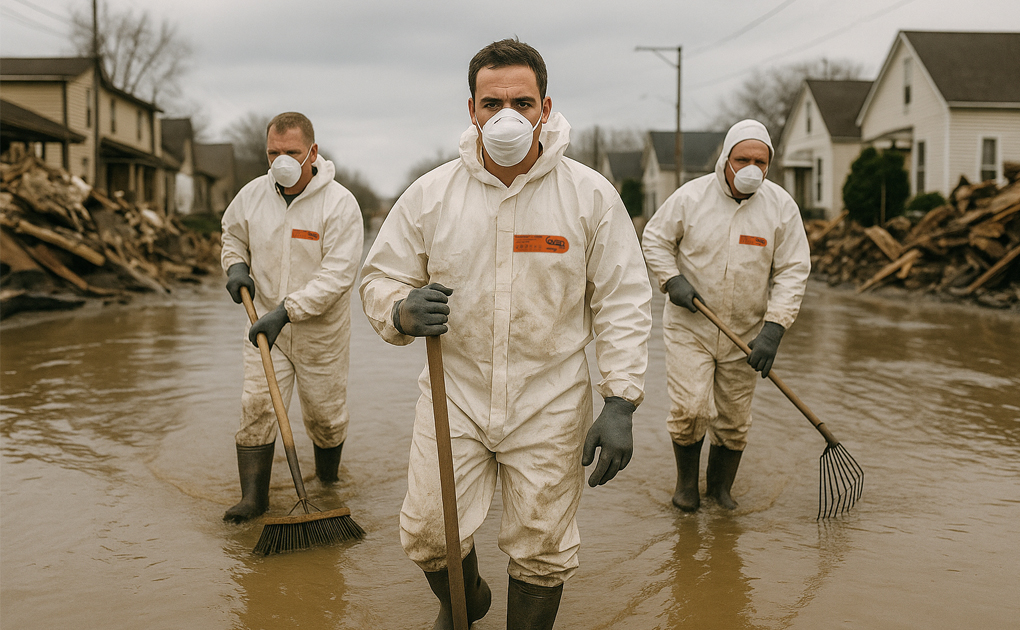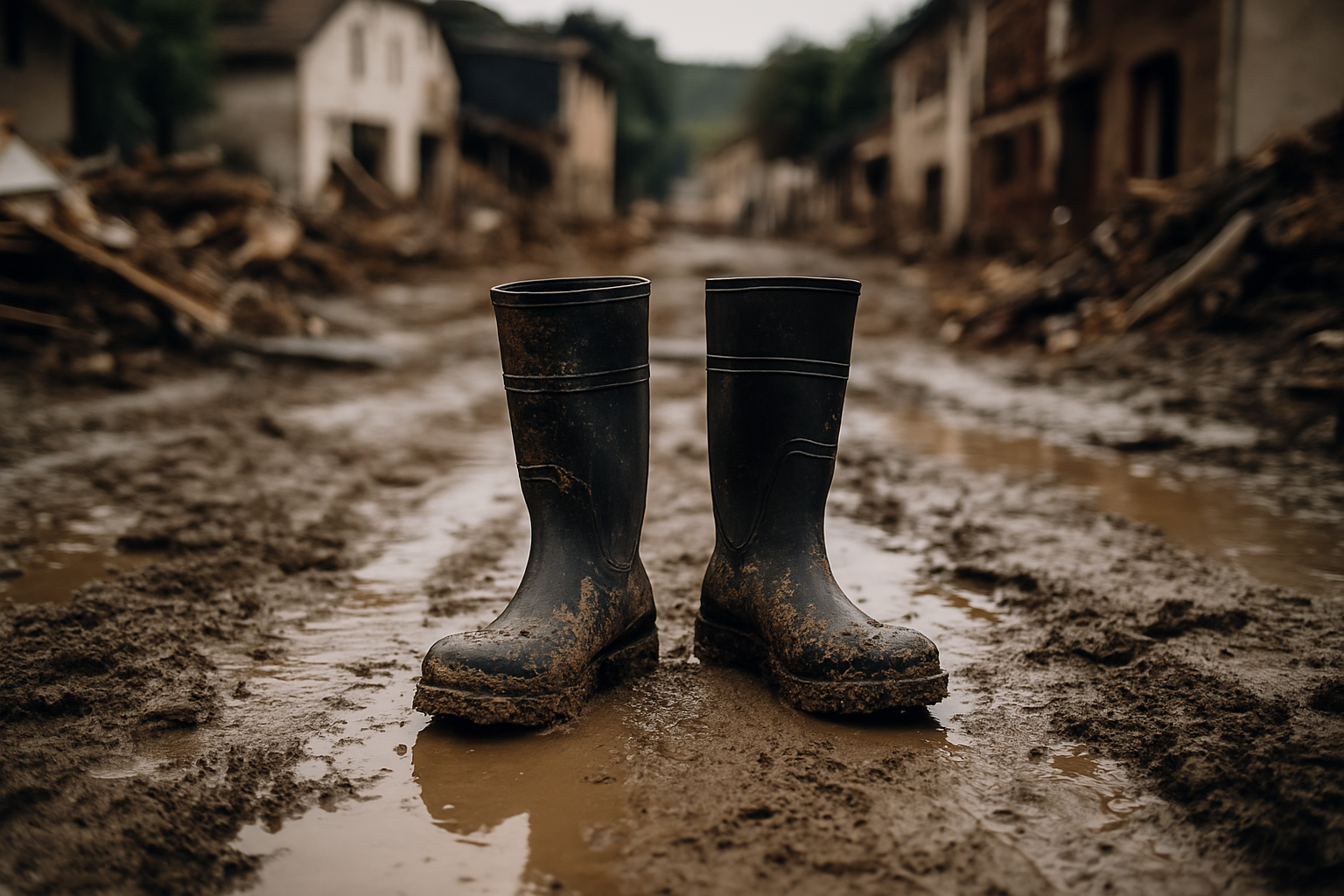
Personal protective equipment in disaster relief: Lessons from the flood disaster
When helpers themselves are in danger
Imagine: You've lost everything—your house, your car, your mementos. The rain doesn't stop, the water rises relentlessly. While you desperately try to save the bare necessities, emergency responders fight for your survival in the chaos. But even these rescuers find themselves in mortal danger: contaminated water, debris, and invisible hazards.
The flood disaster in the Ahr Valley has shown how vulnerable even experienced emergency personnel are without personal protective equipment (PPE).
Why PPE is essential in disaster relief
In disaster relief, every minute counts, but speed must not be compromised for safety. Rescue workers and emergency personnel work under extreme conditions: contaminated water, unstable buildings, poor visibility, and constant stress. Without appropriate PPE, there is a risk not only of acute injuries but also long-term health damage.
The four core functions of PPE in disaster relief:
- Health protection: Protection from germs, chemicals and mold.
- Injury prevention: Broken glass, nails and metal splinters are repelled.
- Visibility & coordination: High-visibility clothing provides orientation.
- Psychological safety: Protection increases concentration and resilience.
Typical dangers during flood operations
- Biological: Wastewater, animal carcasses and mold spores endanger health.
- Chemical: Heating oil, cleaning agents and solvents harm the skin and respiratory tract.
- Physical: Injuries from debris, electric shock or hypothermia.
- Psychological: stress, exhaustion and the experience of suffering.
Which PPE is necessary in disaster relief
Selecting the right PPE is crucial for safety and operational capability. Protective suits, gloves, and respirators are essential, especially in the event of flooding.
Protective suits:
- Disposable protective suits type 3/4/5/6: protect against splash water, oil and chemicals.
- Multinorm clothing: provides additional protection against heat or flames.
Hand protection:
- Chemical protection gloves for contaminated water.
- Cut-resistant gloves against glass and metal.
- Multi-layer systems for flexibility and durability.
Respiratory and eye protection:
- FFP2/FFP3 masks against mold spores and dust.
- Full masks with filters for unknown substances.
- Protective goggles against splashes and dust.
Foot protection:
- Safety boots with steel toe cap: protection against nails and debris.
- Non-slip soles for safe walking.
- Chemical resistant models for oil and gasoline.
Experience shows that only when PPE is considered as a complete solution can helpers carry out their work without avoidable risks.
Conclusion
Disasters like floods or storms cannot be prevented, but their consequences can be mitigated. Personal protective equipment protects the health and operational readiness of rescuers.
Manufacturers like ASATEX develop PPE solutions such as the protective suits CoverStar®CS500, CoverChem®CC200 and the 3450 chemical protection glove, which are specifically designed for extreme situations. This ensures that emergency personnel, whether firefighters, the Federal Agency for Technical Relief (THW), or volunteers, remain protected even in emergencies.

Learning from the Ahr Valley flood
The 2021 flood disaster in the Ahr Valley highlighted the importance of well-organized PPE in an emergency. After the floods, one of the largest cleanup operations in recent history began. Rescue workers were confronted with mud-filled basements, contaminated furniture, piles of debris, and sharp debris.
The rescuers stood for hours in contaminated mud, had to clear debris, and deal with enormous psychological stress. PPE was crucial: Without protective suits, gloves, and breathing masks, many tasks would have been impossible.
